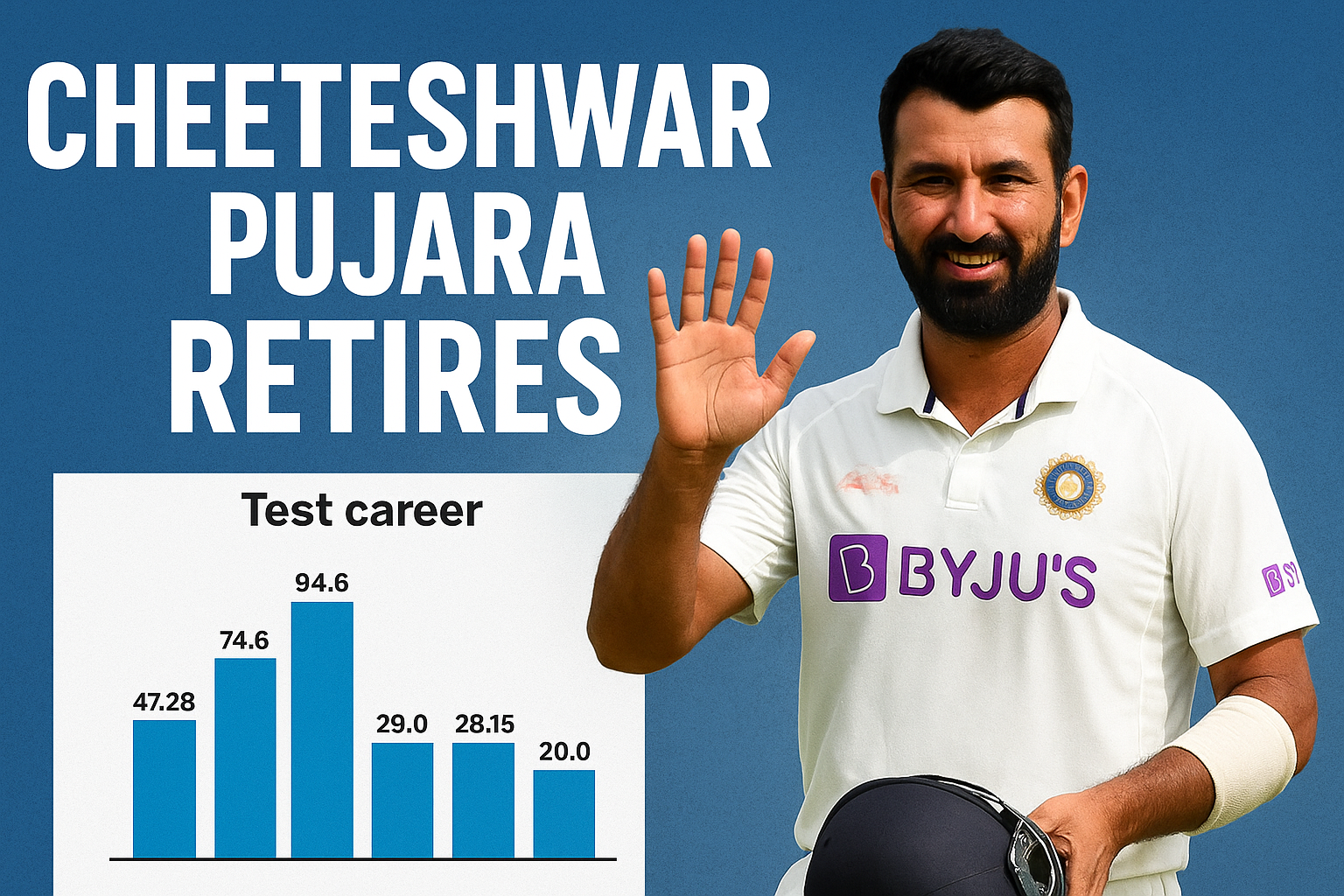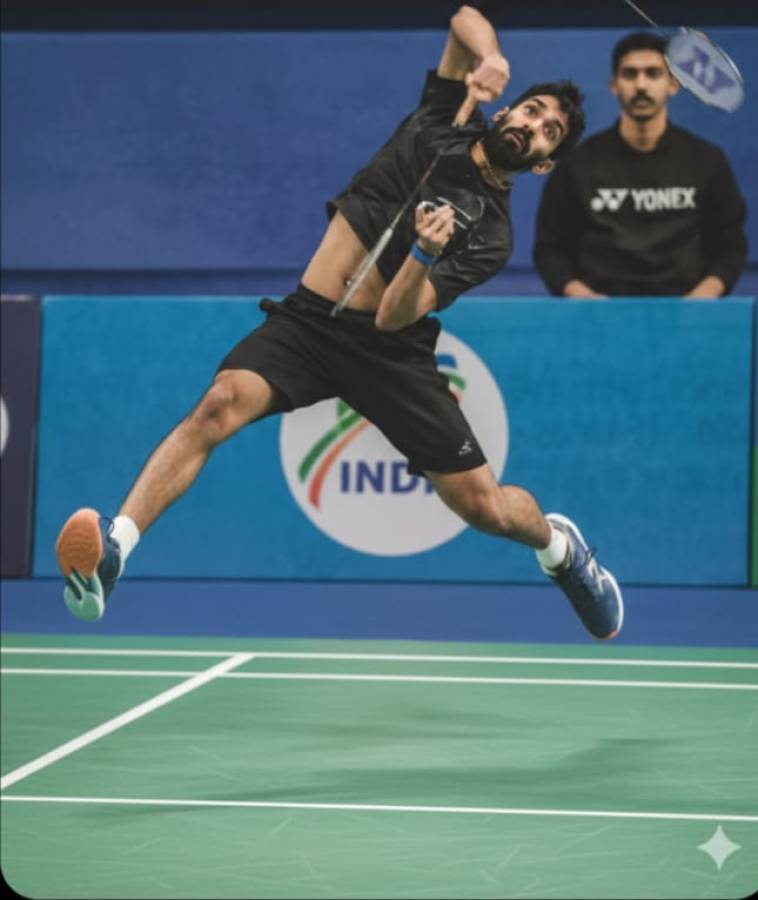
In the fast-paced world of modern cricket, where sixes soar into the stands and strike rates often decide reputations, there stood a man who refused to follow the script. Cheteshwar Pujara, the silent warrior of Indian cricket, recently announced his retirement from all formats of the game. For more than a decade, he carried the weight of India’s Test batting on his shoulders with an approach that was as old-fashioned as it was priceless. His story is not one of glamour but of grit, not of fireworks but of foundations. And in his retirement, India bids farewell to a cricketer who reminded us that patience and resilience are as heroic as aggression.
Pujara was often seen as the spiritual successor to Rahul Dravid, another wall of Indian cricket. The comparison was not accidental. Like Dravid, he believed in occupying the crease, wearing down bowlers, and giving his team a chance to build. In an era when batsmen are expected to score at a strike rate above 80 in Tests, Pujara sometimes ground out runs at half that speed. Yet those runs were worth their weight in gold. His ability to bat for hours and frustrate world-class bowlers gave India victories in places where they once only dreamed of winning.
The defining moment of Pujara’s career came during the 2018-19 Test series in Australia. India had never won a Test series on Australian soil before, but Pujara changed that history. He faced 1258 balls across four matches, scoring 521 runs with three centuries. He absorbed blows on his body from fast bowlers, stood unshaken when wickets fell around him, and became the wall that could not be broken. Captain Virat Kohli later admitted that without Pujara, the series win would not have been possible. For many fans, those four Tests in Australia represent Pujara’s finest hour, and perhaps the finest hour of Indian Test cricket.
His courage was special and different. When the cricketing world moved towards instant gratification, he held on to the value of time at the crease. Bowlers hated bowling to him because he simply refused to give away his wicket. He believed in discipline, in letting balls go outside off stump, in waiting for the right moment. For young players growing up on Twenty20 cricket, his example was a reminder that Test cricket is not only about runs but also about character.
Yet, his journey was not easy. He was dropped several times from the side when runs did not come quickly enough. He was often criticized for being too slow. Many wondered whether he belonged to another era. But every time doubt rose around him, Pujara answered with performances that silenced his critics. His double hundreds at home and his fighting fifties abroad often turned matches around. Even when he was not scoring freely, he was saving games, protecting teammates, and ensuring India did not collapse under pressure.
Pujara’s numbers tell a story of their own. In 103 Tests, he scored 7195 runs at an average of 43.60, including 19 centuries and 35 half-centuries. While he played only a handful of limited-overs games, his true greatness lay in the longest format. Few cricketers today have the ability to bat long hours without fatigue, and Pujara mastered this art better than most. His career is not measured in sixes or strike rates but in the number of times he blunted the best attacks in the world.
With his retirement, India loses not just a batsman but also a symbol. He symbolized patience in a restless world, silence in a noisy stadium, and belief in a game that is slowly changing its priorities. For school students who watched him, he was an example that determination can sometimes be greater than talent. He proved that you do not need glamour to be great, and you do not need noise to be heard.
As Cheteshwar Pujara walks away from the pitch for the last time, Indian cricket owes him gratitude. He may not have been the loudest hero, but he was the one who stood tall when it mattered most. And in years to come, when stories of Indian cricket are told, his name will be remembered not with fireworks but with respect, not with applause but with admiration. He was India’s silent guardian, and his legacy will last as long as Test cricket itself.





















